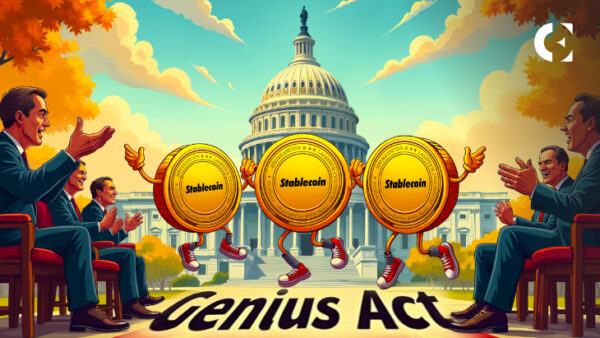- India’s Chief Economic Adviser Nageswaran warns USD stablecoins challenge monetary control
- He flagged risks to seigniorage and financial sovereignty, especially in emerging markets
- Global USD stablecoin market exceeds $300 billion; India cites UPI as domestic buffer
The rising dominance of the U.S. dollar–backed stablecoins could disrupt global monetary frameworks. This warning has come out from India’s Chief Economic Adviser, V. Anantha Nageswaran. Speaking in Mumbai, he warned the increasing adoption challenges traditional monetary systems, especially in emerging economies seeking to safeguard financial sovereignty.
Why It matters now
The stablecoin market has crossed $300 billion in value, with steady growth through 2025. That scale draws banks, funds, and payments firms toward rails that settle in dollar tokens rather than local currency, raising policy stakes for emerging economies like India.
Related: Banks Confront $1 Trillion Deposit Shift Toward USD-Linked Stablecoins
USD Stablecoins Challenge Policy and Seigniorage
According to Reuters report, Nageswaran noted that the rising circulation of dollar-pegged tokens could affect monetary transmission and the seigniorage benefits that governments rely on.
Seigniorage – the profit governments make from issuing currency, is threatened as stablecoins redirect transaction demand toward private digital assets instead of state-issued money. Countries relying on national currencies for fiscal stability face reduced control over liquidity and interest rate adjustments in such cases.
He also highlighted intensifying competition between stablecoins and traditional banking channels. As users transact via digital tokens, banks struggle to retain deposits and lending influence. This trend also alters how central banks implement policy, complicating inflation targeting and foreign exchange management.
How Does India’s UPI Offer a Buffer?
India’s own digital payment framework, however, provides a buffer against these global trends. India’s UPI, the Unified Payments Interface, has already revolutionized domestic transactions with an estimated 491 million individuals and 65 million merchants of active users as of June 2025.
Therefore, the need for dollar-pegged stablecoins within India remains limited compared to economies where similar instant payment systems are less developed. India’s focus on monetary discipline and financial inclusion aligns with its cautious approach toward cryptocurrencies.
According to official reports, India is not rushing to introduce specific legislation for crypto regulation. Instead, policymakers are assessing the potential macroeconomic impact before adopting any framework. This careful stance underscores India’s intent to protect its financial ecosystem while remaining open to technological innovation.
Global Stablecoin Market Surges Beyond $300 Billion
Globally, the USD stablecoin market now exceeds $300 billion, driven partly by clearer U.S. regulations and institutional adoption. This expansion reflects growing investor preference for dollar-linked digital assets.
Related: With $230B in Stablecoins, Is Big Money Ready to Flow Into Crypto?
Disclaimer: The information presented in this article is for informational and educational purposes only. The article does not constitute financial advice or advice of any kind. Coin Edition is not responsible for any losses incurred as a result of the utilization of content, products, or services mentioned. Readers are advised to exercise caution before taking any action related to the company.







